RECOIL OFFGRID Survival Scavenger Chop Shop
In This Article
In a long-term survival scenario, scavenging is essential. Sure, many of us have go-bags, or even stockpiles of emergency supplies, for when SHTF. However, sooner or later, those supplies will be used up, lost, or stolen, even for the most prepared among us. It’s inevitable. So, where do you turn when your supplies are dwindling? You could spend valuable time scavenging buildings that have already been picked clean of resources, or you could look for something that literally surrounds us in everyday life – the automobile.
There are over 250 million cars and trucks in the United States alone, and each one is packed with useful survival items that are easily overlooked. From obvious resources, like gasoline, to more obscure parts, every abandoned vehicle you see is a veritable treasure trove of resources. You certainly don’t have to be a mechanic to find them, and oftentimes, you don’t even need any tools – you just need to know where to look. And that’s where this guide comes in.
Before we get started, let’s go over some general guidelines:

Note: For demonstration purposes, we’ll be scavenging from a common 2008 model four-cylinder Japanese sedan. However, virtually any type of passenger car or truck will do.
Warning: The techniques described in this article are for illustrative purposes only. We need not remind you that it’s illegal to scavenge from cars and junkyards you don’t own.
For more useful survival hacks and tips, check out our book OFFGRID Presents: DIY Survival, on sale now.
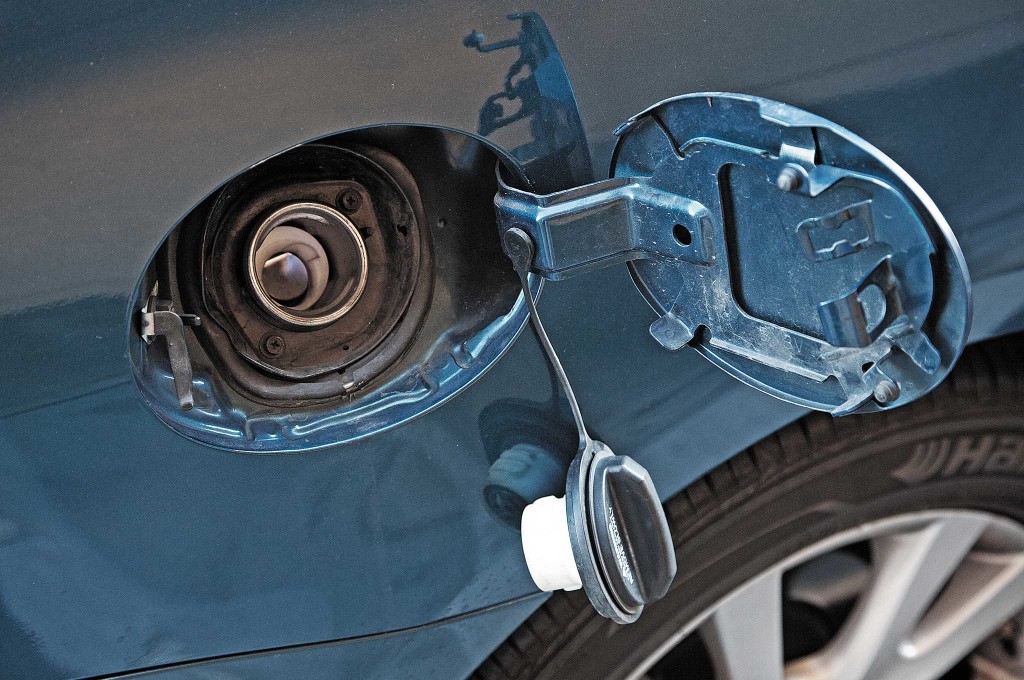 Above: The gas cap is easily found on most vehicles, but may be easier to access on older models.
Above: The gas cap is easily found on most vehicles, but may be easier to access on older models.
If you don’t already know why gasoline would be like mana from heaven in a doomsday situation, you’re better off putting down this magazine and going to www.darwinawards.com. If you have a functional vehicle, you’ll want to replenish its fuel supply. Also, gasoline burns, and it does so very efficiently. Naturally, it can be used for starting fires, as an excellent solvent to remove grease and grime, and as a highly sought-after barter good.
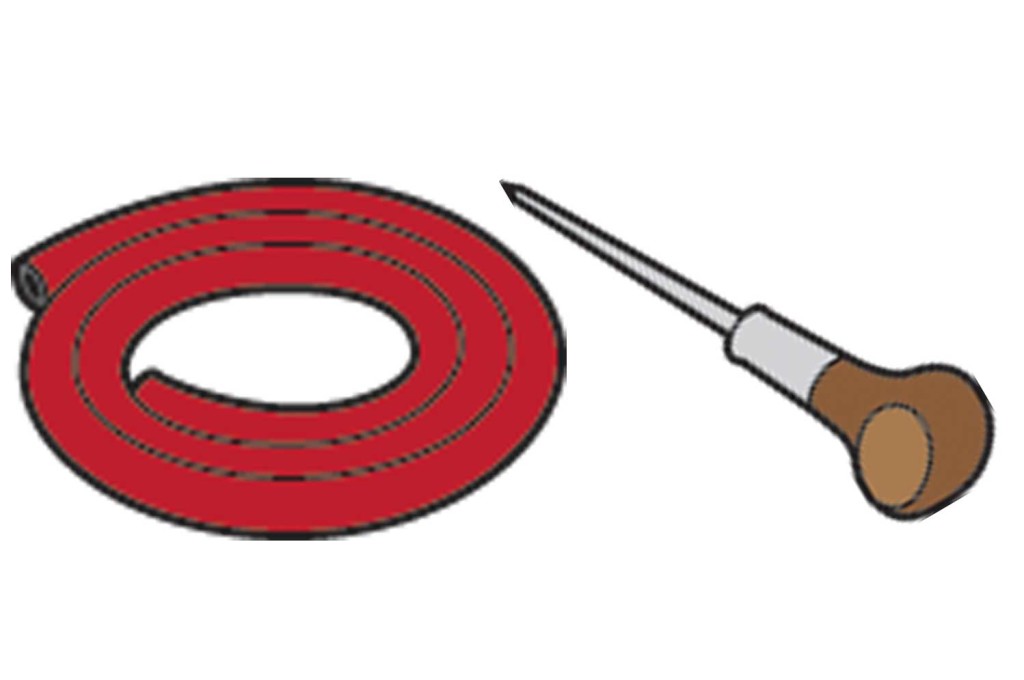
Above: Rubber hose and something to pierce with, such as an awl, can be easily sourced from a hardware store.
How to Scavenge:
Due to its obvious value, gasoline is often surprisingly difficult to scavenge. Most new vehicles have a screen or valve that prevents the use of a hose to siphon from the gas tank filler neck. If you can find a vehicle from the mid-1990s or earlier, it may lack this security feature – but you’ll need to pry the metal flapper near the opening out of the way with a screwdriver or stick before inserting the hose. If siphoning using your mouth, you also run the risk of serious injury from gasoline inhalation.
Assuming you don’t care about damaging the vehicle, a much better option is to look underneath the car, find the fuel tank, and bore or punch a hole using a knife, awl, cordless drill, or other sharp instrument. Modern cars with plastic fuel tanks are ideal for this purpose, although it still can be done on older metal fuel tanks. Work with care, as you don’t want to cause a spark. Note that you might need to punch a second air hole to help the gas flow more easily – a la those 2.5-gallon water jugs you get at the grocery store.
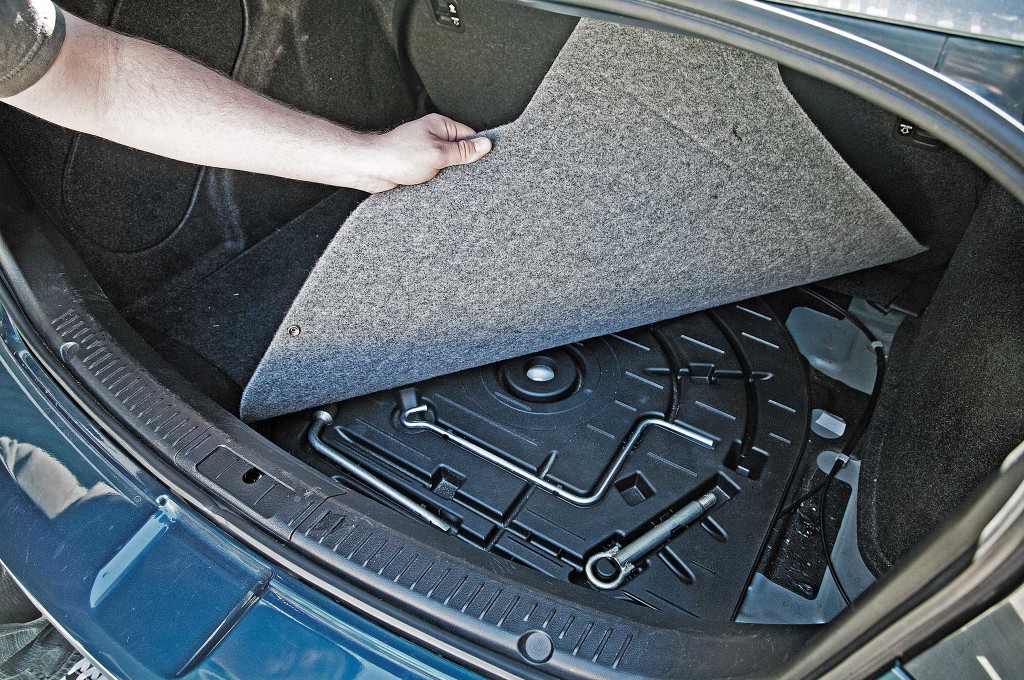 Above: Many vehicle models store their recovery tools under the carpet in the trunk.
Above: Many vehicle models store their recovery tools under the carpet in the trunk.
Almost every passenger car includes a jack and tools for changing a flat tire. Primarily, they can be used to remove the car’s wheels and tires – we’ll get into why that’s useful in the next step. Secondly, the steel lug wrench found in most cars functions as an excellent blunt instrument, weapon, or prybar. It’s definitely worth holding on to.
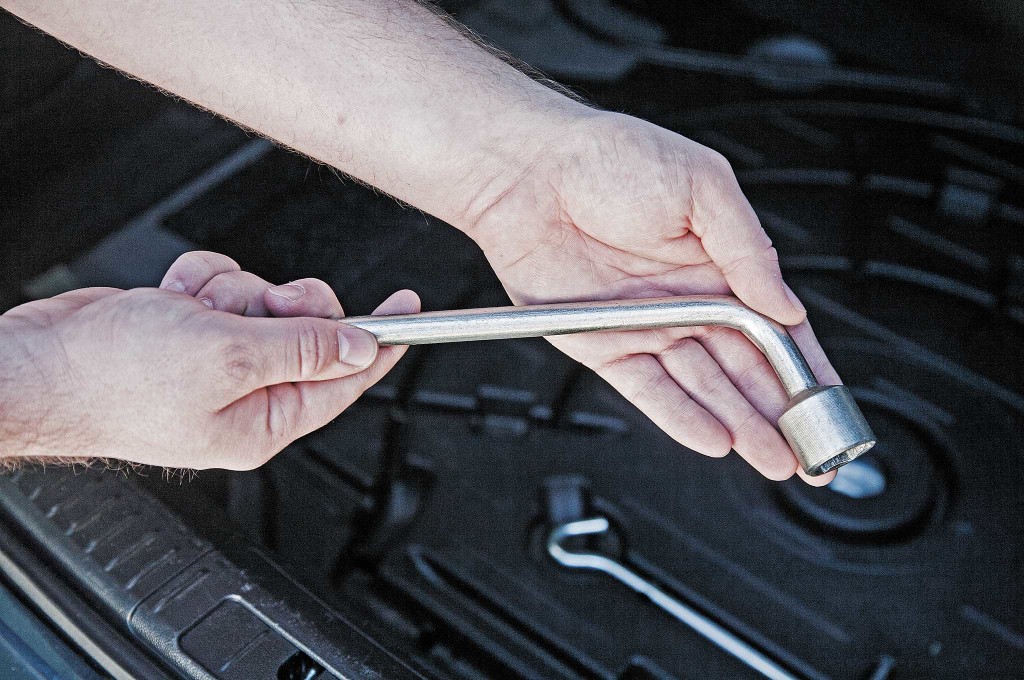 Above: Vehicle recovery kits typically include everything you’d need to remove a tire.
Above: Vehicle recovery kits typically include everything you’d need to remove a tire.
How to Scavenge:
Most cars store these tools underneath the trunk floor panel, although they may also be found underneath or behind the seats in some vehicles. The jack is typically also located near the tools. If you don’t spot it immediately, check for storage compartments or removable panels in the trunk.
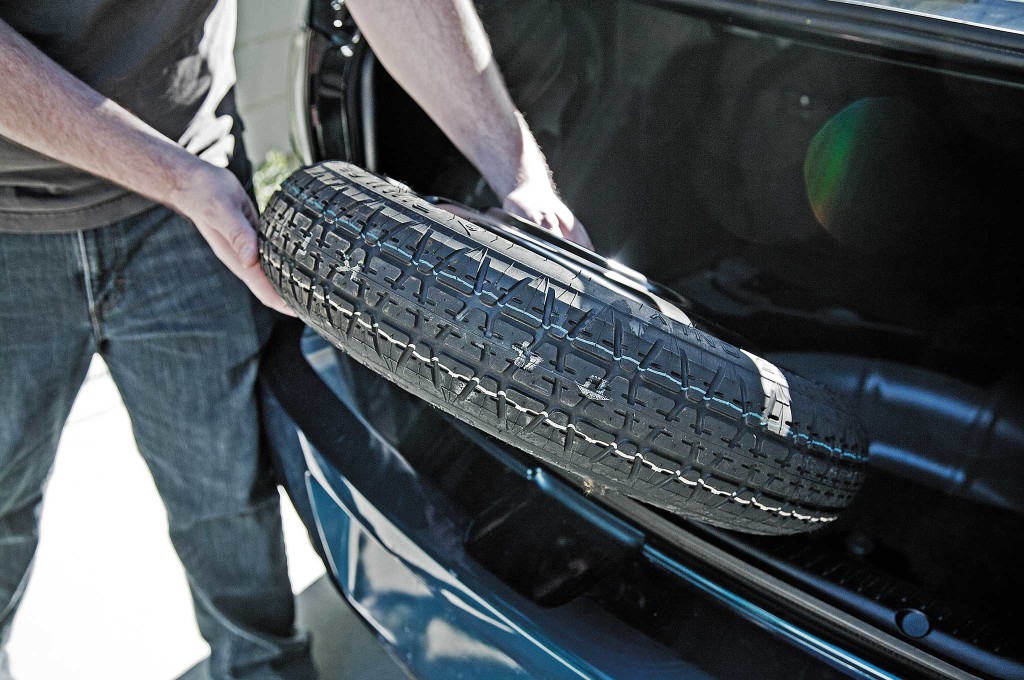
Above: A spare tire has many uses beyond replacing a flat.
Ever see a tire burn? It creates acrid black smoke that’s visible for miles. If you’re in a survival scenario where rescue is possible, burning car tires is a great way to alert rescuers of your position.
Note: Always remember to let the air out of tires before burning, or they may burst and scatter or put out your fire.
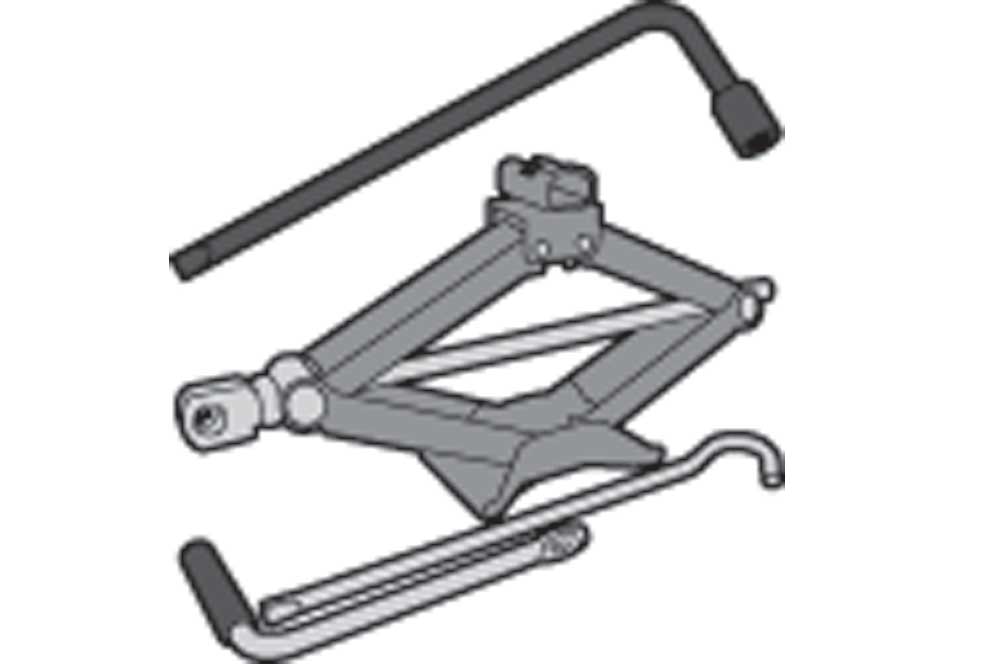 Above: With the use of a jack stand, a tire can be removed even if a spare is unavailable.
Above: With the use of a jack stand, a tire can be removed even if a spare is unavailable.
How to Scavenge:
Start by looking for a spare tire, as most vehicles have one inside or underneath the trunk. If the vehicle is missing the spare tire, or you need more tires for a larger fire, you can use the jack and tools (see No. 2) to remove the other four wheels and tires. One caveat: Removing a tire from its wheel is quite a chore with handtools, so hopefully you needn’t roll them too far to where you plan to use them.
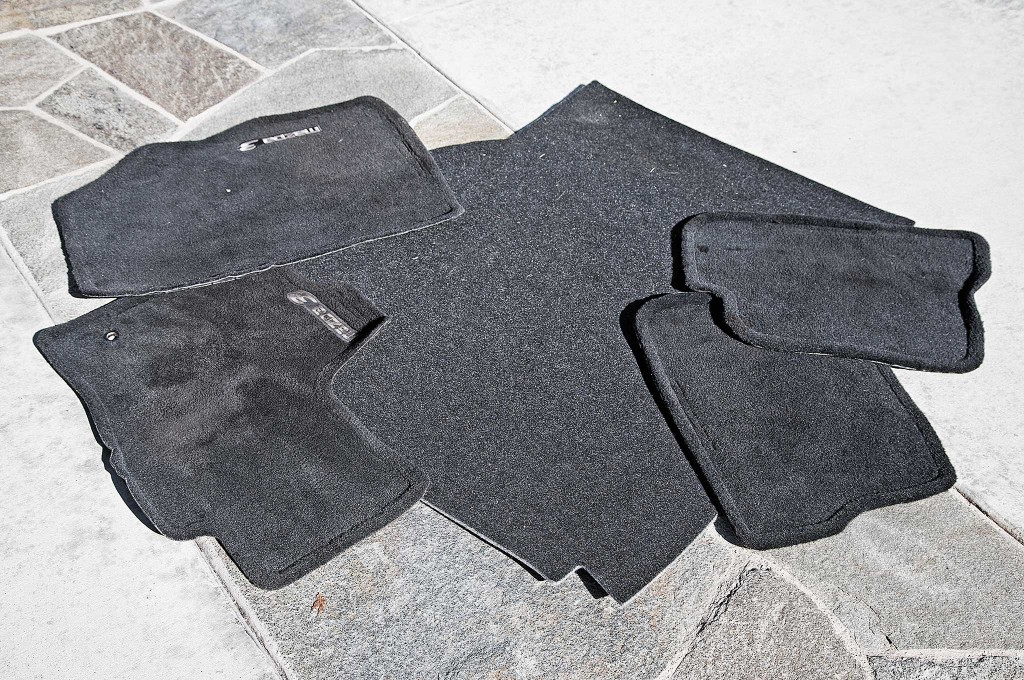
Above: Carpet, even in small amounts, has several uses.
Thick, soft, insulated fabric is always handy to have in a survival scenario. It can be used for warm bedding, blankets, or shelter against the elements.
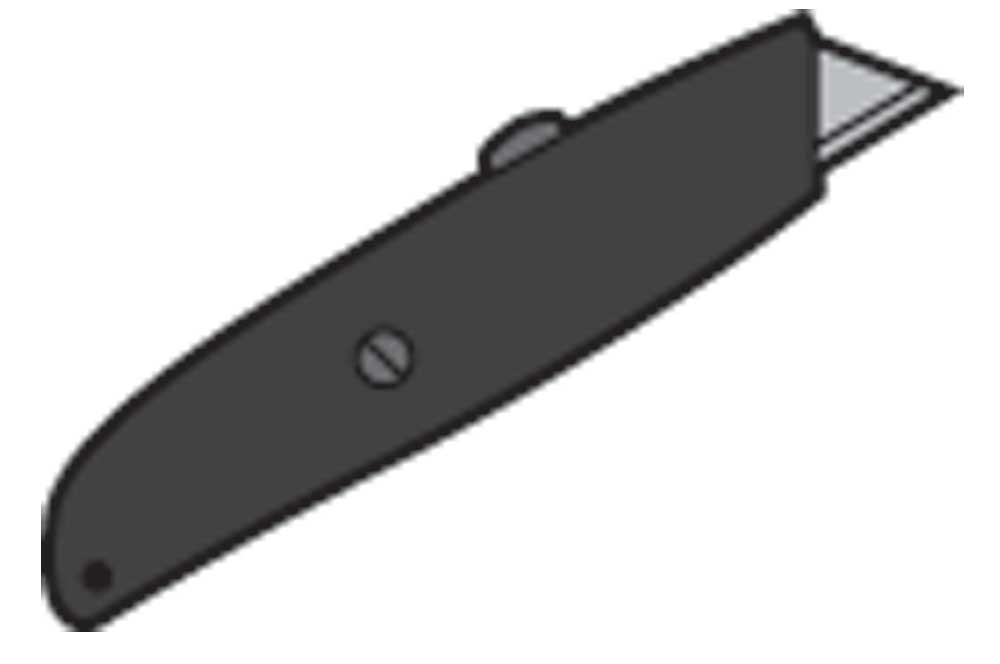 Above: You may need the help of a blade to completely remove upholstery from a vehicle.
Above: You may need the help of a blade to completely remove upholstery from a vehicle.
How to Scavenge:
Look for trunk liners, floor mats, and seat covers that are easily removable. If these aren’t available, you may have to cut away the upholstery. The headliner is a great place to start, as it’s usually one large piece of fabric.
Warning: If you’re stranded in a cold-weather environment, you might be tempted to use the upholstery as kindling for a fire. Be cautious. They usually contain chemicals that turn into toxic fumes once burned.
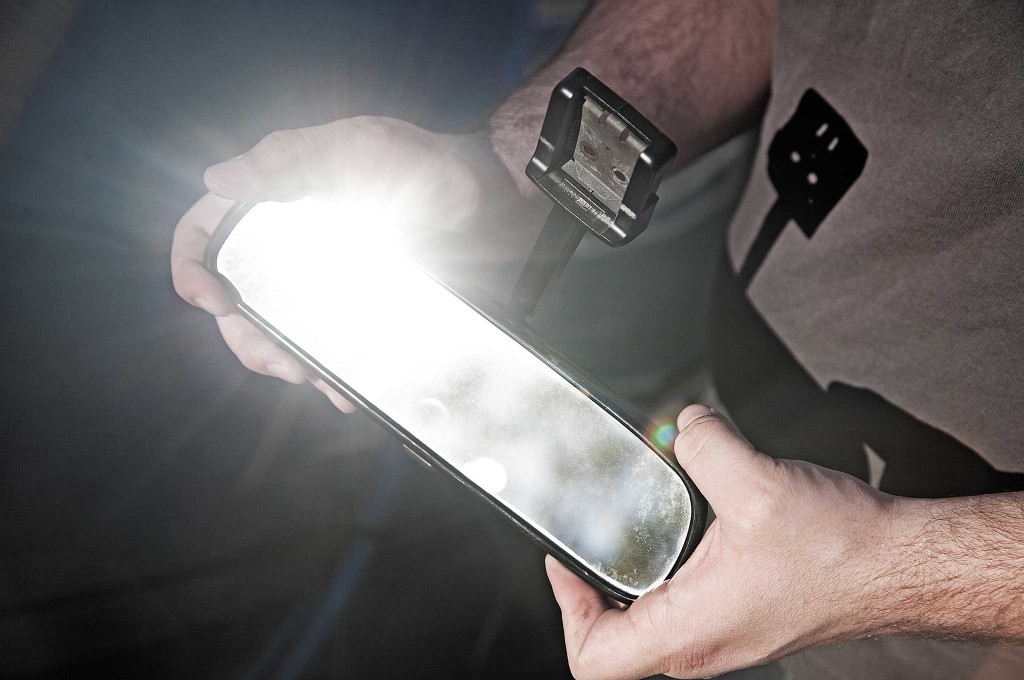
Above: The reflective properties of a scavenged mirror can be used for signalling and self-care.
Automotive mirrors are large and high-quality, perfect for rescue signaling at long distances. They can also be used to start fires or to assist with personal hygiene (e.g. check for ticks, inspect an injury, or examine debris in your eye).
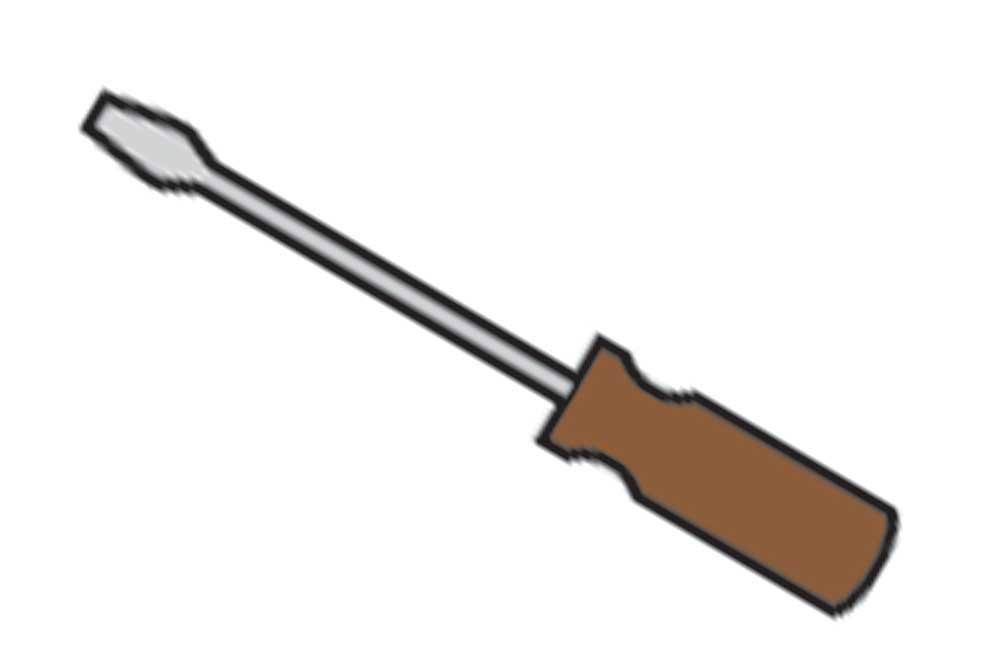
Above: Most mirrors will require a prying tool or screwdriver to remove.
How to Scavenge:
Exterior mirrors can be carefully pried out of their housings with a knife or flat screwdriver. Interior mirrors can be unscrewed from the roof, or unclipped from their windshield mounts with relative ease.
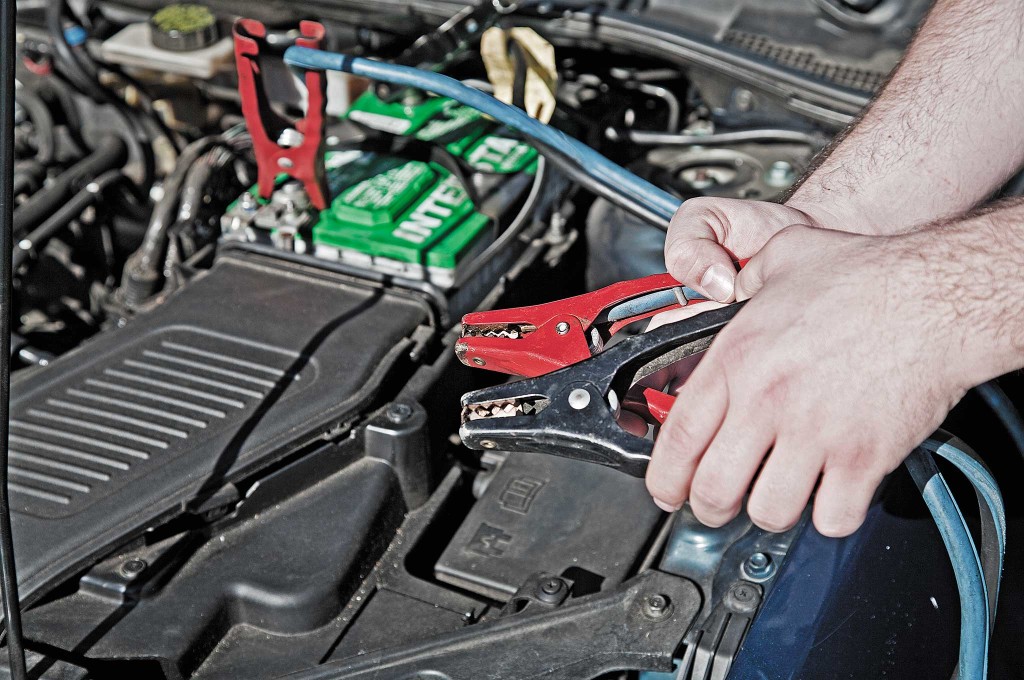
Above: Jumper cables aren’t just for getting your car moving again.
Car batteries provide strong, long-lasting 12-volt electrical power. When combined with jumper cables or two lengths of large-gauge wire, they can be used to jump-start other cars, start fires, or even directly power lights (we’ll cover that part later). If you’re able to find a power inverter elsewhere, you can also use a car battery to power a myriad of AC electronics, such as mobile phones or radios.
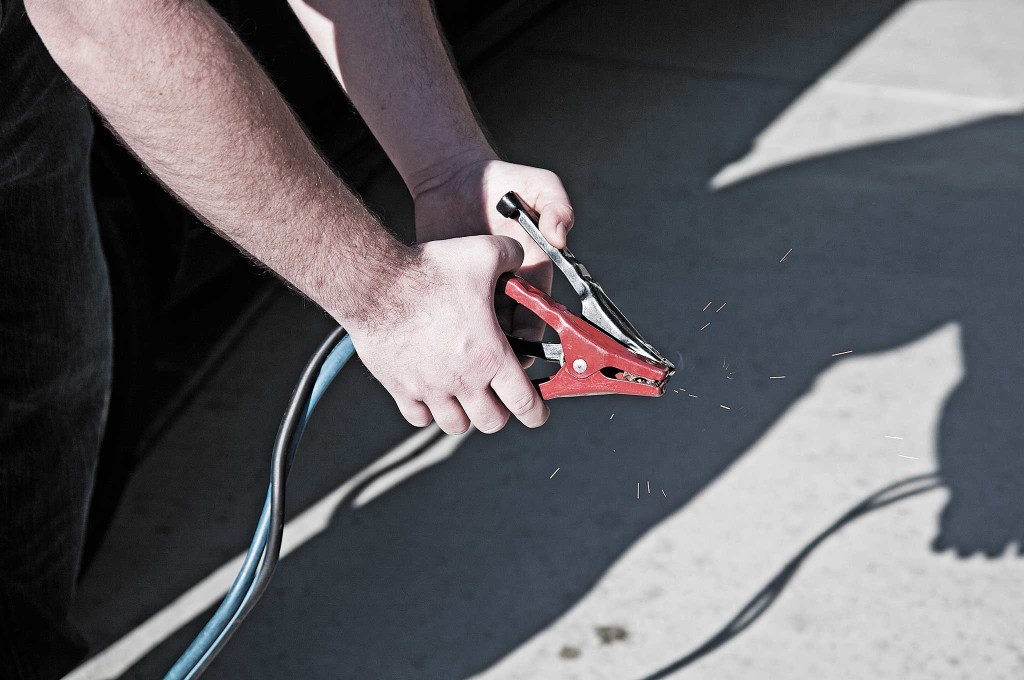
Above: The voltage of a car battery can create sparks, but care must be taken to the risk of electric shock.

Above: These common recovery tools can usually be found somewhere in the vehicle.
Car batteries provide strong, long-lasting 12-volt electrical power. When combined with jumper cables or two lengths of large-gauge wire, they can be used to jump-start other cars, start fires, or even directly power lights (we’ll cover that part later). If you’re able to find a power inverter elsewhere, you can also use a car battery to power a myriad of AC electronics, such as mobile phones or radios.
How to Scavenge:
Pop the hood and take a look. Most of the time, the battery location will be obvious. Some cars hide the battery under a removable plastic cover, and a few luxury cars and sports cars relocate the battery to the trunk (where they may be hidden underneath trim pieces). If you’ve got jumper cables, you can connect them directly to the battery and touch them together for instant fire-starting sparks. If you want to take the battery with you, you’ll need to disconnect the tie-down bar and terminal wires, usually with a small wrench or pliers. They are heavy, though.
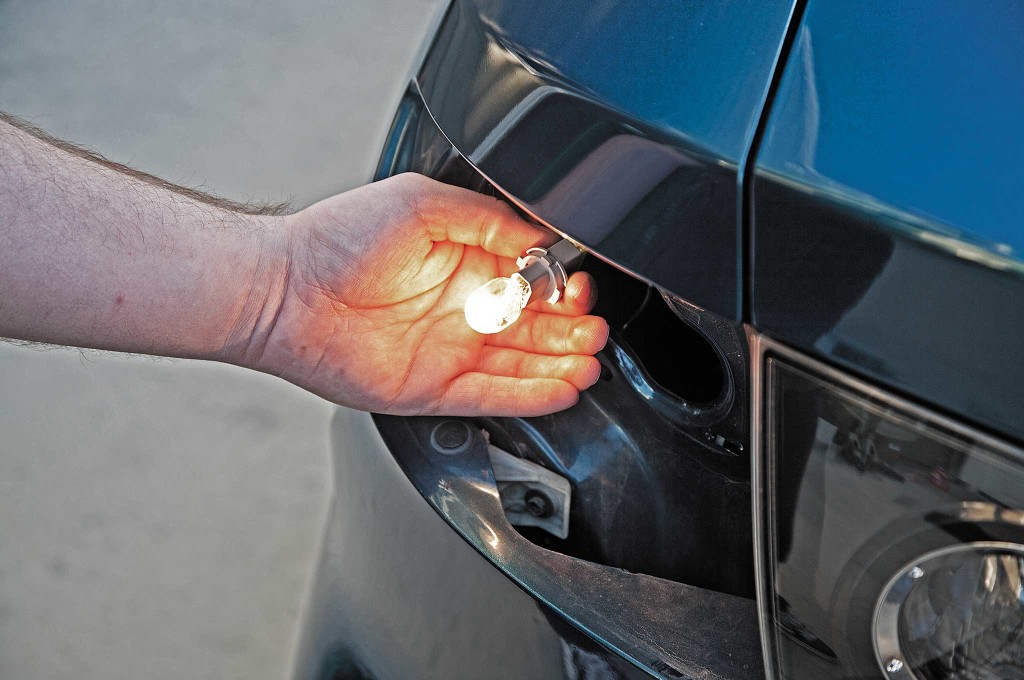
Above: Bulbs can be accessed either through an open hood, or by removing the headlight casing.
Automotive lights can be wired directly to a 12-volt battery for instant, bright light. An entire headlight assembly can be removed for focused light, or the bulbs themselves can be used to illuminate a wide area.
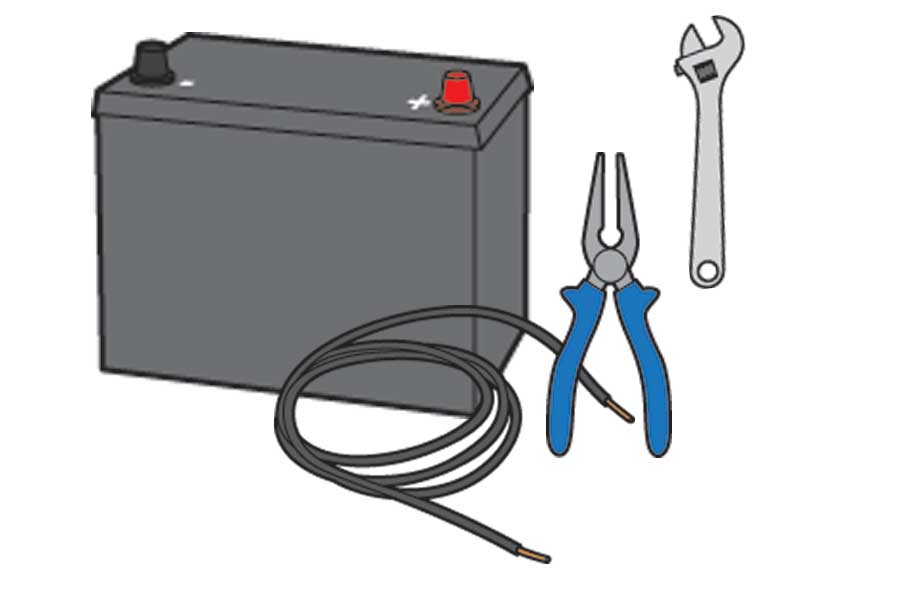
Above: Removing a headlight requires a little more effort, and possibly some extra tools.
How to Scavenge:
If you have a set of wrenches or needle-nose pliers, it may be possible to unbolt and remove an entire headlight with bulbs, but it’ll take some time. If not, you can reach behind most car headlights and unclip or twist the bulbs to pull them out of the housings. Then cut two pieces of wire from the engine bay, and connect the positive and negative battery terminals to the corresponding bulb terminals for instant light.
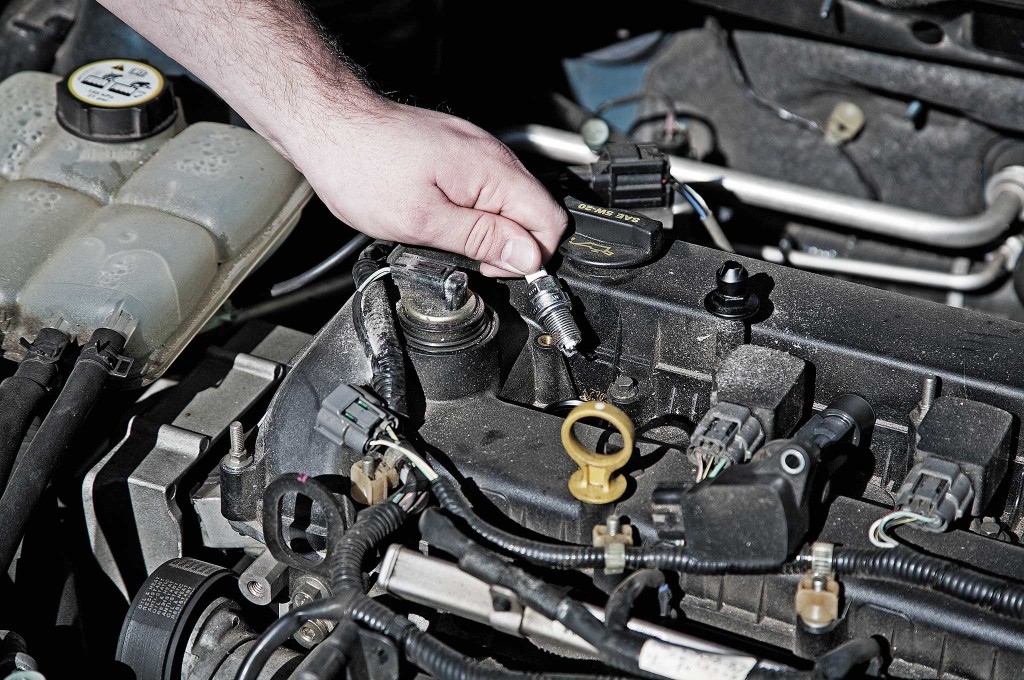
Above: Spark plugs are much easier to access on older vehicle models.
If you’ve got spark plugs, you’ve got a quick and easy glass-breaking tool. Just smash the white ceramic section on the plug with a blunt instrument, collect the larger chunks of ceramic, and you’ve got projectiles that can shatter glass panels instantly from a distance. It’s much more effective and safe than trying to kick in a window or smashing a glass partition with a valuable tool (you wouldn’t want to use, say, your flashlight as a hammer and risk damaging it, especially in a SHTF scenario).

Above: The ceramic insulator of spark plugs can be broken and used as shrapnel.
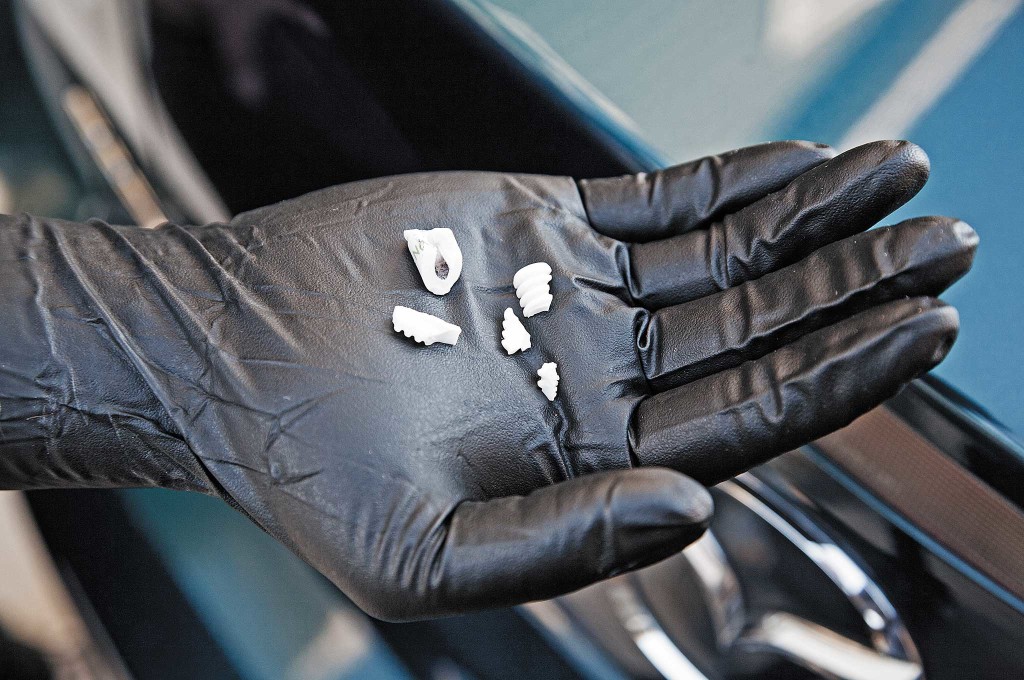
Above: Larger pieces of ceramic will be the most useful.
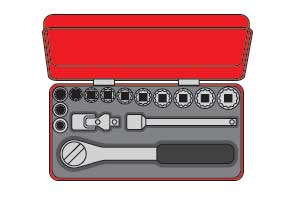
Above: Spark plugs can be removed with deep sockets and a socket wrench.
How to Scavenge:
The downside to spark plugs is that they’re quite difficult to remove, even with basic tools. However, if you’ve got a standard hardware store tool kit with a ratcheting wrench, sockets, and extensions, it’s doable. Our example car is a four-cylinder with coil-on-plug ignition, the most common style for cars newer than the mid-1990s. On top of the engine, one 8mm bolt is removed to take out a coil pack, and a 5/8-inch deep socket is used to remove the spark plug itself. Then just wrap the plug in a cloth and smash it to collect the ceramic pieces.
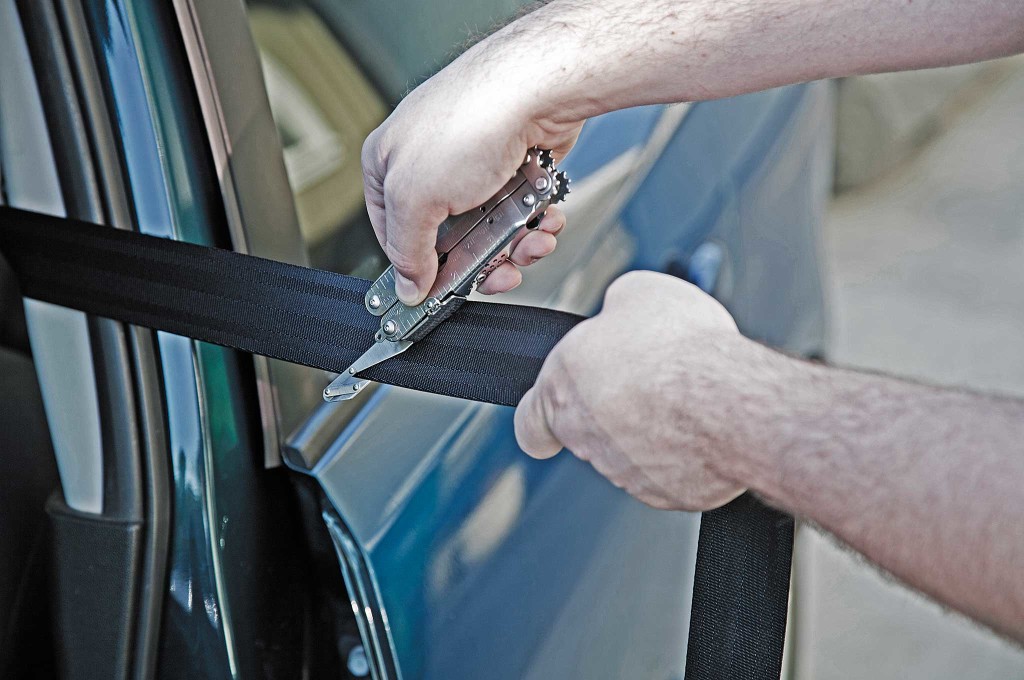
Above: A knife, scissors or dedicated seatbelt cutter can be used to remove a section of belt.
Seatbelts are constructed of extremely strong, durable nylon, making for excellent cordage. If you need to tie something down, look no further.
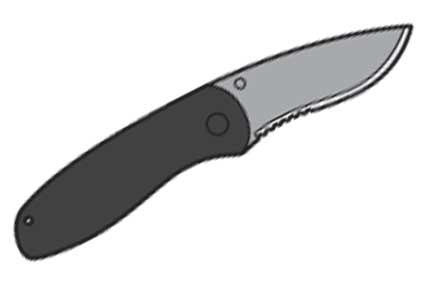
Above: Sharp cutting tools are necessary to get through the nylon of a seat belt.
How to Scavenge:
Simply pull to unravel the seatbelt from its reel, then cut. You can always use a knife, but we jumped at the chance to finally use the nifty seatbelt cutter on our multitool.
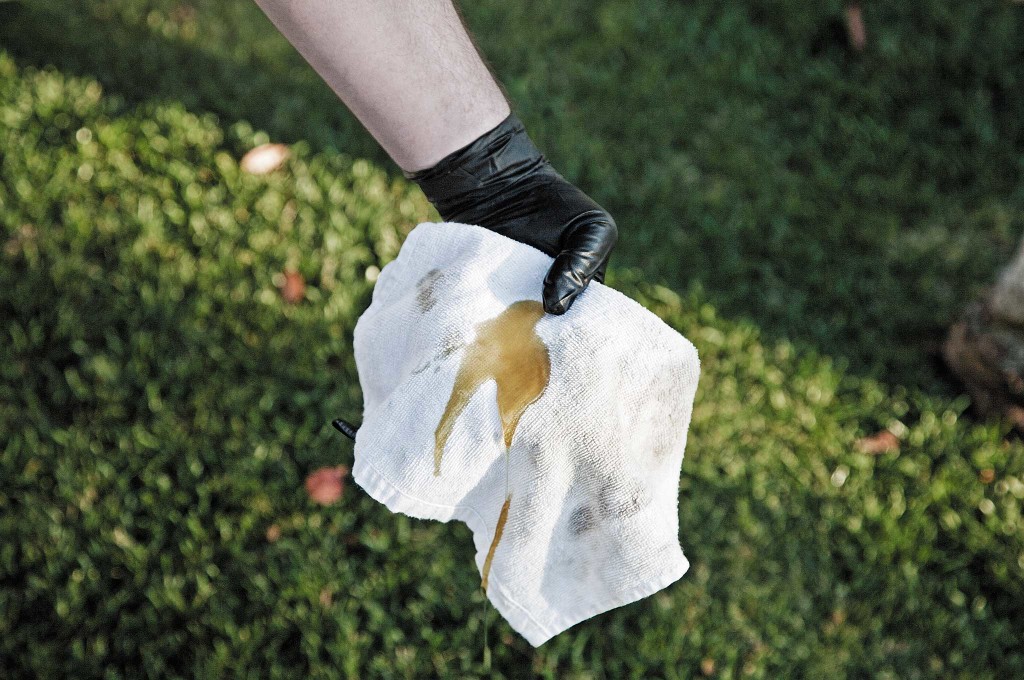
Above: Oil is a petroleum product, which means it has both protective and flammable properties.
Motor oil is an excellent lubricant for mechanical items – including your firearms – hence its use inside car engines. It can also be used in an oil-burning furnace to provide heat (there are plenty of guides available online).
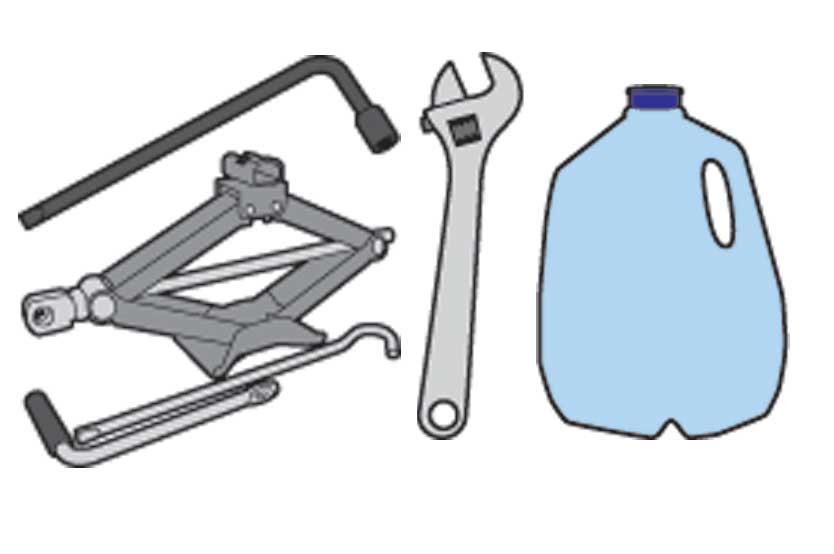
Above: Since it’s in the engine, getting to the oil will require tools and a basic understanding of where to access it.
How to Scavenge:
For most passenger cars, you’ll need to jack up the vehicle, although some pickups have enough ground clearance for you to crawl underneath. Remove the oil drain bolt with a wrench and drain some oil onto a rag or into a bottle.
When scavenging from a vehicle, always check the glovebox, center console, and other storage compartments for miscellaneous items. You might be surprised by what you’ll find – bottled water, medications, first-aid kits, hand sanitizer, flashlights, lighters, pens and paper, tools, and more. In addition, vehicles have a lot of glass, wiring, and rubber hoses to be salvaged. You might even be able to use the vehicle itself as a temporary shelter – or disconnect and use the hood and trunk lids as roofing or sleds. Car parts and accessories have many uses beyond what they were built for, so your adaptation will be limited only by your creativity and ingenuity.
Subscribe to Recoil Offgrid’s free newsletter for regular updates on more content like this.
Editor’s Note: This article has been modified from its original print version for the web.
 STAY SAFE: Download a Free copy of the OFFGRID Outbreak Issue
STAY SAFE: Download a Free copy of the OFFGRID Outbreak Issue
No Comments